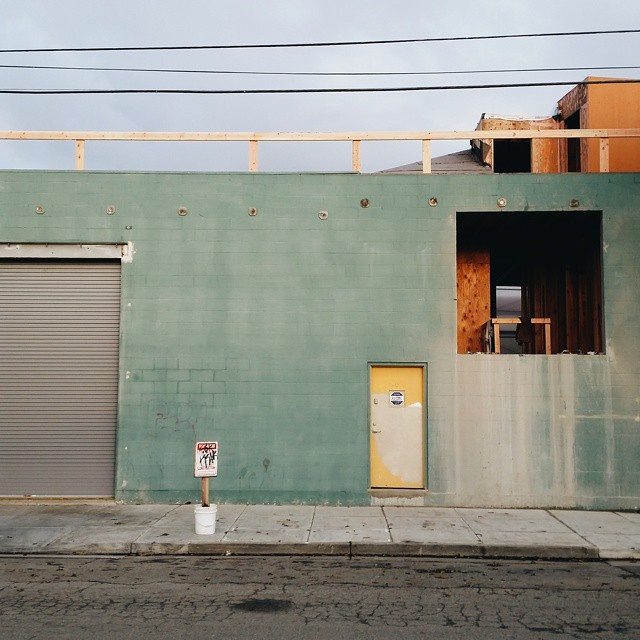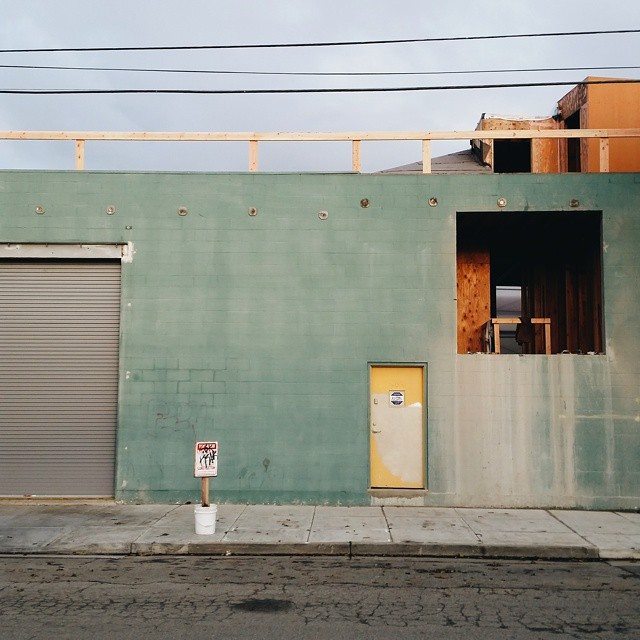
Hey streettogs, to continue with my “Ask Eric Kim” series (any questions you had about street photography, business, marketing, social media, etc.) I put a question out on Facebook regarding what questions you had (so I could try my best to help out and offer some ideas):
Kai Kienzle asked the following:
“How [do you] discover interesting scenes in your familiar (thus boring) home city?”
Dear Kai,
I often have the same problem when it comes to my own photography. I travel quite a bit teaching and one of the most difficult things is to stay inspired in my own familiar (and thus boring) home city.
I grew up in Alameda, California (in the bay area) and currently live in Berkeley (just next-door) where my girlfriend Cindy is studying her Ph.D. in Vietnamese Colonial History at U.C. Berkeley.
When I’m not traveling or teaching workshops, my days are pretty boring and straightforward. I wake up in the morning, take a cold shower (icy cold), usually have a shot of espresso, either stop by the gym or drive Cindy to class. After that, I have a big breakfast at home (at least 4 strips of bacon and 1/2 pound of ground beef), another shot of espresso (you can never have too much coffee), and then start writing for this blog. I then usually write for about 2–3 hours, take a break, perhaps run some errands, pick up Cindy for class, or go on a walk to the nearby cafe my house (Artis Cafe on 4th street in Berkeley). I then usually go make some dinner for the both of us, we might meet a friend, go home, read a book, and go to sleep.
My days are (more or less) pretty similar to this blueprint. Yeah, not that glamorous for an “international street photographer” — huh? So anyways, I have the same problem you do being inspired at home. After a while, everything starts looking the same— and I become accustomed to my surroundings. I start to daydream about my travels in Tokyo, Paris, London, and think to myself, “Man, if I only lived in those (more) interesting places— I would be always be inspired and make incredible street photos all the time.” Not only that— but I live quite close to San Francisco, but always make excuses how it is too far— and bemoan the fact that Berkeley is so “boring” compared to SF. Then again, I go into daydreaming mode, and think how much happier and more inspired I would be if I lived in San Francisco— where I would shoot all the time, drink great espressos (all the time), and meet other inspired photographers (and shoot with them all the time and talk photography). Every time I get into this line of thinking, I need to give myself a slap in the face (and another self-induced punishment of an icy-cold shower) and smack myself back into reality. I have to remind myself, “Eric, quit making excuses. Your best photos are in your own backyard, and there are tons of interesting things to photograph. You’re just not trying hard enough, and you’re not thinking outside (or perhaps ‘inside’) the box.”
My experiences finding it hard to stay “inspired” in my own home city
Berkeley, 2014 #vsco A photo posted by Eric Kim (@erickimphoto) on
The last few months living in Berkeley— I have been trying to make interesting photos in my own backyard. I have realized that although there aren’t many people walking around in Berkeley, there are lots of interesting “urban landscapes” and cars just parked in random industrial-looking areas (not the typical “hippie” Berkeley most people think about).
Therefore I have been trying to do a type of photography, which suited my own hometown: urban landscape “street photography”.
So after I drop Cindy off class, I try to drive around Berkeley (either the way to the grocery store, to the cafe, Costco, wherever) and park my car whenever I see an interesting urban landscape. I have been shooting this project in a square-format (6×6 on my medium-format Hasselblad on Kodak Portra 400) as I don’t need to photograph anything moving (otherwise I would just shoot on my Leica). I then take a photo on my smartphone as a square-format (in-camera), and then process the photo in the “A3” filter on VSCO, then upload it to Instagram/Tumblr. To be honest, I don’t know how much more (or and if) I will keep shooting medium-format film (as the convenience of shooting on my smartphone is quite nice, and scanning negatives is a pain in the ass). Smartphones are pretty awesome for shooting (especially with the VSCO filters, which honestly look pretty film-like for me).
Anyways, I have been making a lot of these urban-landscapes around my own city, and funny enough— I met another street photographer named Walter Margerison (who works at Artis Cafe as a “master brewer”) who also has been doing exactly the same thing (shooting urban-landscapes of cool cars on his iPhone with VSCO) and we have been talking about doing a joint-project, zine, or exhibition.
Suggestion #1: Shoot “urban landscapes”
Therefore my first suggestion for you to find interesting scenes in your own home city is to shoot “urban landscapes.” Especially if you live in a more suburban area (without a lot of people walking around), shooting “urban landscapes” is a good way to explore your own home city. A lot of people will ask me, “But Eric— is urban landscapes really ‘street photography’?”
To me— I say it is (look at the work of Lee Friedlander, Fred Herzog, and William Eggleston as well as the ‘New Topographic’ photographers). For me, I would define “street photography” as “documenting humanity”— and I think the urban dwellings in which we live (and construct) is a huge identity of our community and society. But honesty at the end of the day, don’t worry about shooting “street photography” in your hometown— it can be any type of photography.
Suggestion #2 Shoot “personal documentary”
Which brings me to my second suggestion, which is to shoot more “personal documentary” or a “stream-of-consciousness” type of photography.
“Personal documentary” is a phrase coined by Anders Petersen, a famous black-and-white photographer from Sweden who essentially photographs the people who he interacts with on a daily basis. He shoots with a simple point-and-shoot film camera (Contax T3) and on Kodak Tri-X film (I believe at 400). He shoots a lot with a flash, and keeps it simple. He shoots portraits of his friends, himself (self portraits), landscapes, and anything he finds interesting. He makes his own life his photographs— and therefore his photos ooze with personality, soul, and emotion. Another photographer who does this well is Jacob Aue Sobol, as well as Daido Moriyama (all of them shoot in the similar vein— but Daido is the pioneer of this type of photography).
Suggestion #3 Shoot “stream-of-consciousness” photography
As with “stream-of-consciousness” photography— it is very related to “personal documentary” in the sense that you don’t think too much when you are shooting. Just photograph whatever you find interesting before your eyes, without any prejudice or self-editing. Imagine a “stream-of-consciousness” as a flow of experiences that you experience in your daily life. The coffee you have over breakfast. The car-ride, subway ride, or commute you have to work. The people you interact with at work. Your little walk around the block during your lunch break. The friends you meet after work, or the beers or drinks you might have with them. Photograph these little small moments in your everyday life.
Suggestion #4: Ask yourself, “Why do I photograph?”
Meeting up with @jt_inseoul in Seoul, and his epic 8-year old Sony Cybershot A photo posted by Eric Kim (@erickimphoto) on
Personally, I have been wondering to myself this question a lot: “Why do I photograph?” I also wonder, “Who do I photograph for?” I also wonder when I am 80 years old, “What kind of photographs will be truly meaningful to me?”
Josh White (a street photographer who is focusing more on “personal documentary” photography at the moment) in Seoul has deeply inspired me in this regard. He had a tragic accident in his family (his father passed away) and he realized that after all of these years of shooting street photography (photographing strangers), he barely took photos of those really close to him (his family and friends). Therefore after this incident, he had the big epiphany that the most important thing to photograph was his own life, and the people who were meaningful to him. Therefore his photographs are much more inwards looking than outwards looking.
I have also been following in Josh’s footsteps— I have been working on what I dubbed “The Cindy Project”, which is essentially a photographic diary of my life with Cindy. I hope that one day when we are 80 years old (and both hopefully still alive), we can look happily and tenderly at all the life experiences that we had together.

Most of these photographs I take of Cindy are pretty “snapshotty” (mostly looking into the camera, posing, and smiling) but for some reason— they still bring me a lot of happiness and joy.
For Cindy, she prefers the less posey photographs of her (I happen to agree)— so I have been trying to shoot a lot more candid shots of her in unusual circumstances, which are personal to us. I often find the best camera with me during those “in-between moments” is my smartphone, so I have been shooting most of them on my phone (also a lot on my Leica).
So Kai, think about your own life. Think about those who are close to you. Think about what daily experiences are meaningful to you— and photograph and document that. Make your photography personal, and pursue this type of “stream-of-consciousness” style of photography and make these “personal documentary” styled images.
Suggestion #5: Go to where the fish (people) are

Lastly, if you want to shoot more traditional “street photography” (candid photographs of people) in your own hometown, first of all you have to go to where the people are. You aren’t going to go fishing in a lake which you obviously know has no fish. And even if you go to a lake (where there is a lot of fish), it wouldn’t make sense to go fishing where you know there are no fish swimming.
So try to head to the downtown area of your own city or neighborhood (regardless of how rural the area may be) and try to make interesting photographs of people in your own city. Imagine yourself as an alien (or a tourist)— that has come to your own hometown for the first time. What would you find interesting? What would you find weird? What would you photograph to document?
Even though I think my own hometown (Berkeley) is boring— whenever I have a friend who visits, they always exclaim how interesting it is. I then start to notice certain parts of my city which are interesting, and then get re-inspired to photograph.
Therefore perhaps getting a photographer-friend from out-of-town and going on a photo-walk with them might be a good strategy. They will help you see your own home city with fresh new eyes.
Know that everyone succumbs to this issue — even photographers from Paris, London, Tokyo (eventually after a while, they find their own “interesting” cities as “uninteresting”).
Grass is always greener on the other side— but I think the secret to happiness and productivity as a photographer is realizing that the grass is actually greener on your side. If you are able to make interesting photos in your own home city, you will become a truly great photographer.
How are you able to stay inspired to shoot in your own hometown? What are some of your strategies to stay inspired? Share your ideas, suggestions, and tips in the comments below!

